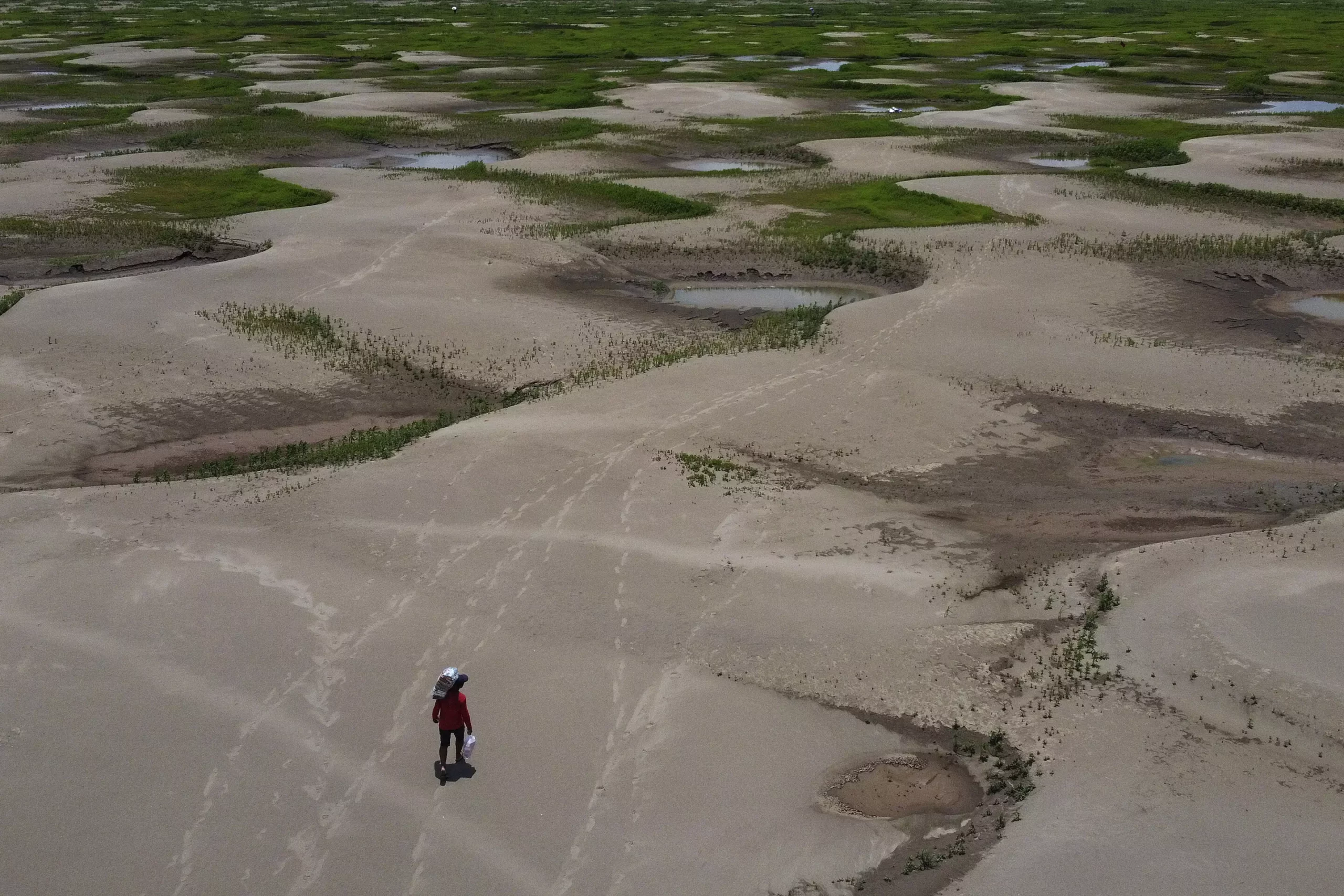Last year, the Amazon rainforest experienced a severe drought, resulting in record-low river levels, food and water shortages, and the death of numerous endangered dolphins. Researchers have now determined that human-induced global warming, rather than El Niño, was the main factor behind this calamity. While both climate change and El Niño contributed equally to reduced rainfall, it was the higher global temperatures that exacerbated the drought’s severity. The combination of decreased rainfall and hotter conditions led to the evaporation of moisture from plants and soil, intensifying the impact of the drought.
According to Friederike Otto, a climate scientist at the Imperial College of London and co-author of the study, the heat-driven evaporation played a critical role in the severity of the Amazon drought. In a world just 1.2 degrees Celsius cooler, the drought would have been much less likely to occur. However, if global warming continues, the combination of low rainfall and high temperatures will become more frequent. This highlights the urgent need to address climate change and take immediate action to mitigate its effects.
The drought in the Amazon, known as the world’s largest rainforest, occurred during a year when the Earth experienced record-breaking heat. The planet is now dangerously close to surpassing the 1.5 degrees Celsius increase since pre-industrial times, which was the threshold that nations aimed to stay within to avoid the most catastrophic consequences of climate change. The Amazon rainforest plays a crucial role in the fight against climate change by storing significant amounts of carbon dioxide. However, if the forest reaches a tipping point due to human-induced emissions and deforestation, it could release substantial amounts of carbon dioxide, further exacerbating the global climate crisis.
The Amazon drought had severe repercussions for both wildlife and communities residing along the river. In Brazil’s Tefé Lake, water temperatures rose to a scorching 39.1 degrees Celsius, resulting in the deaths of over 150 pink and tucuxi river dolphins, which are endangered species. Along the Amazon River, crops withered, fish disappeared, and travel became impossible due to low river levels. Desperate residents lined up along riverbanks, awaiting relief supplies. In the largest city in the region, Manaus, more than 2 million people endured months of inhaling smoke from widespread wildfires.
Regina Rodrigues, co-author of the study from Federal University of Santa Catarina, emphasized the importance of protecting the Amazon in the battle against climate change. It acts as the world’s largest land-based carbon sink, absorbing vast amounts of carbon dioxide. However, if deforestation and human-induced emissions continue to push the forest beyond its tipping point, the Amazon could release significant quantities of carbon dioxide, further complicating efforts to combat climate change. The study underscores the critical need for global cooperation and swift action to protect and preserve the Amazon rainforest.
While the findings of the study support the scientific consensus that climate variations in the Amazon region have reached extreme conditions, meteorologist Luiz Candido from Brazil’s National Institute for Amazon Research raises some important questions. He acknowledges the complexity of interactions among the oceans, atmosphere, and forest, making it challenging to distinguish between the impacts of natural climate variability and human-induced global warming. Candido also questions whether the study overestimated plant evaporation, pointing out that many Amazon plants have deep roots and can retain moisture by reaching damp, deeper layers. These debates underline the need for continued research to gain a comprehensive understanding of the complex dynamics at play.
The devastating Amazon drought of last year was primarily caused by human-induced global warming. While El Niño contributed to reduced rainfall, it was the higher global temperatures that intensified the severity of the drought. The repercussions on wildlife, communities, and the fight against climate change highlight the urgency of implementing effective measures to address climate change and protect essential ecosystems like the Amazon rainforest. The study’s findings provide valuable insights into the complex interactions and debates surrounding climate change in the Amazon, emphasizing the need for continued research and action to mitigate the impacts of global warming.


Leave a Reply